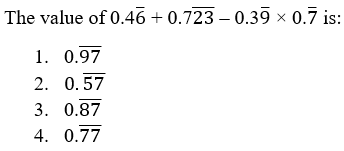Start learning 50% faster. Sign in now
C sits exactly in the centre of the row and faces the one who likes White. Only one person sits between J and the one who likes White. So J can be either extreme right or extreme left end of the row. So here we get following two cases: (1) When J sits extreme right end of the row. J faces one of the immediate neighbours of the one who likes Black. Only two people sit between A and the one who likes Black. A faces the one who likes Brown. D is an immediate neighbour of E. So only two places left for D and E. so I can be either at 2nd or 3rd to the right of the 2nd row. Now we know that G is not an immediate neighbour of I and faces the one who likes Red. I does not like Brown. G does not sit at the extreme end of the line. It means G sits 2nd to the left end of the 2nd row. So I sits 2nd to the right end of the 2nd row. I faces immediate neighbours of E. so E sits left end of the 1st row. F faces the one who likes Violet. F does not like White. So F sits left end of the row and H sits at the centre of the row. The one who likes Pink sits to the immediate right of the person who likes Orange. J does not like Pink. So this case is not valid. (2) When J sits extreme right end of the row J faces one of the immediate neighbours of the one who likes Black. Only two people sit between A and the one who likes Black. A faces the one who likes Brown. D is an immediate neighbour of E. So only two places left for D and E. so I can be either at 2nd or 3rd to the left end of the 2nd row. Now we know that G is not an immediate neighbour of I and faces the one who likes Red. I does not like Brown. G does not sit at the extreme end of the line. It means G sits 2nd to the right end of the 2nd row. So I sits 2nd to the left end of the 2nd row. I faces immediate neighbours of E. so E sits right end of the 1st row. F faces the one who likes Violet. F does not like White. So F sits right end of the row and H sits at the centre of the row. The one who likes Pink sits to the immediate right of the person who likes Orange. J does not like Pink. The one who likes Green sits opposite to the person who sits left of the person who likes Pink. The one who likes Cream faces north.
Determine the value of ‘x’ if x% of 500 plus {1250 ÷ x of 10} × 5 equals 130
2(1/3) + 2(5/6) – 1(1/2) = ? – 6(1/6)
`(21 xx 51 + 54)/(9 xx 14 - 30 )` =?
5760 ÷ 45 × 15 = ?
(3/7 )Of 3360 ÷ 240 + 30 = (?)²
[(1245 ÷ 9) ÷ 12] × 540 = ?2 – 175
(6630 ÷ 13 + 6120 ÷ 12) ÷ (17 × 3) = ?

?2 = (1035 ÷ 23) × (1080 ÷ 24)